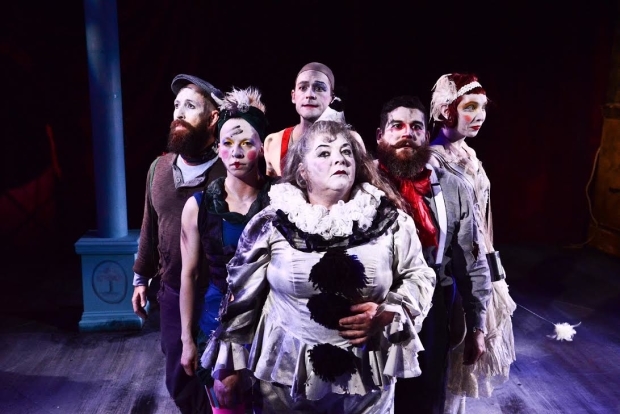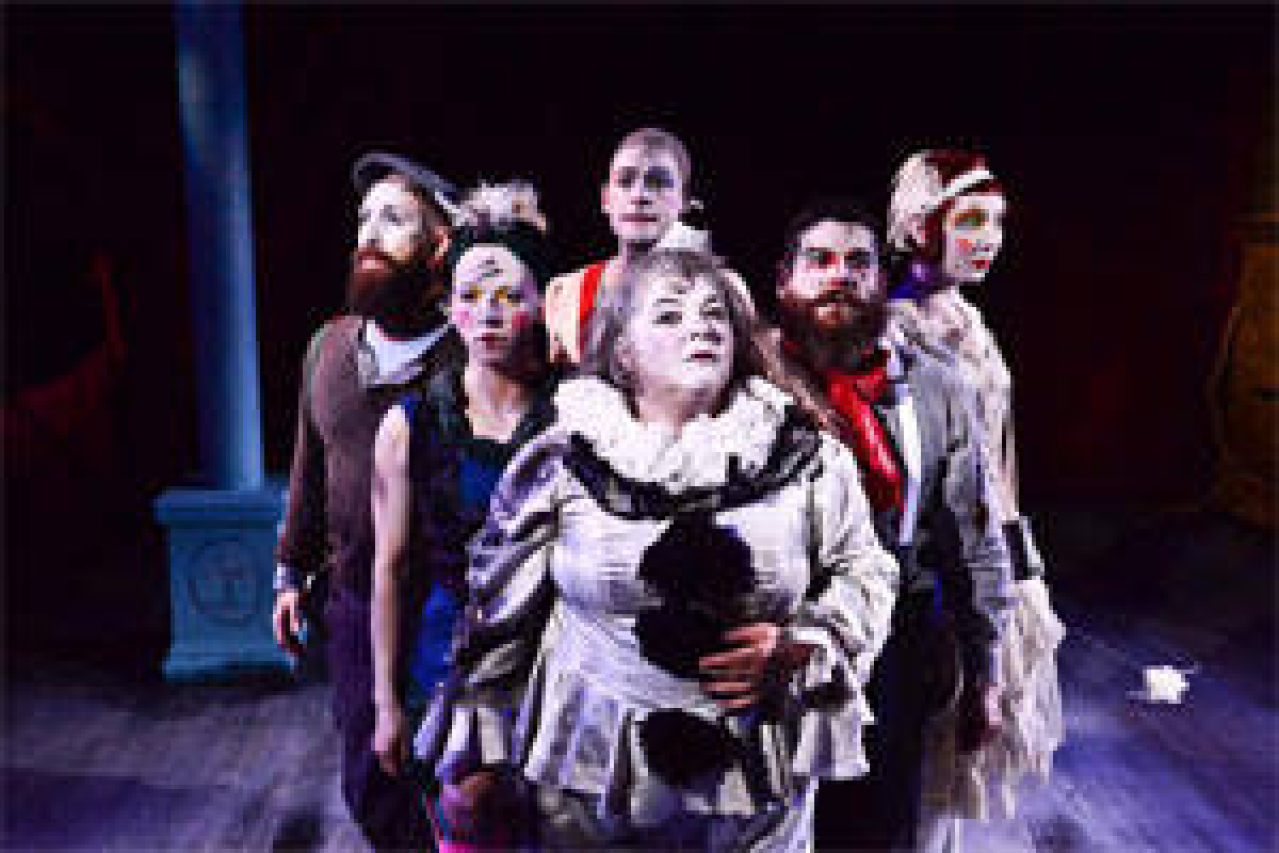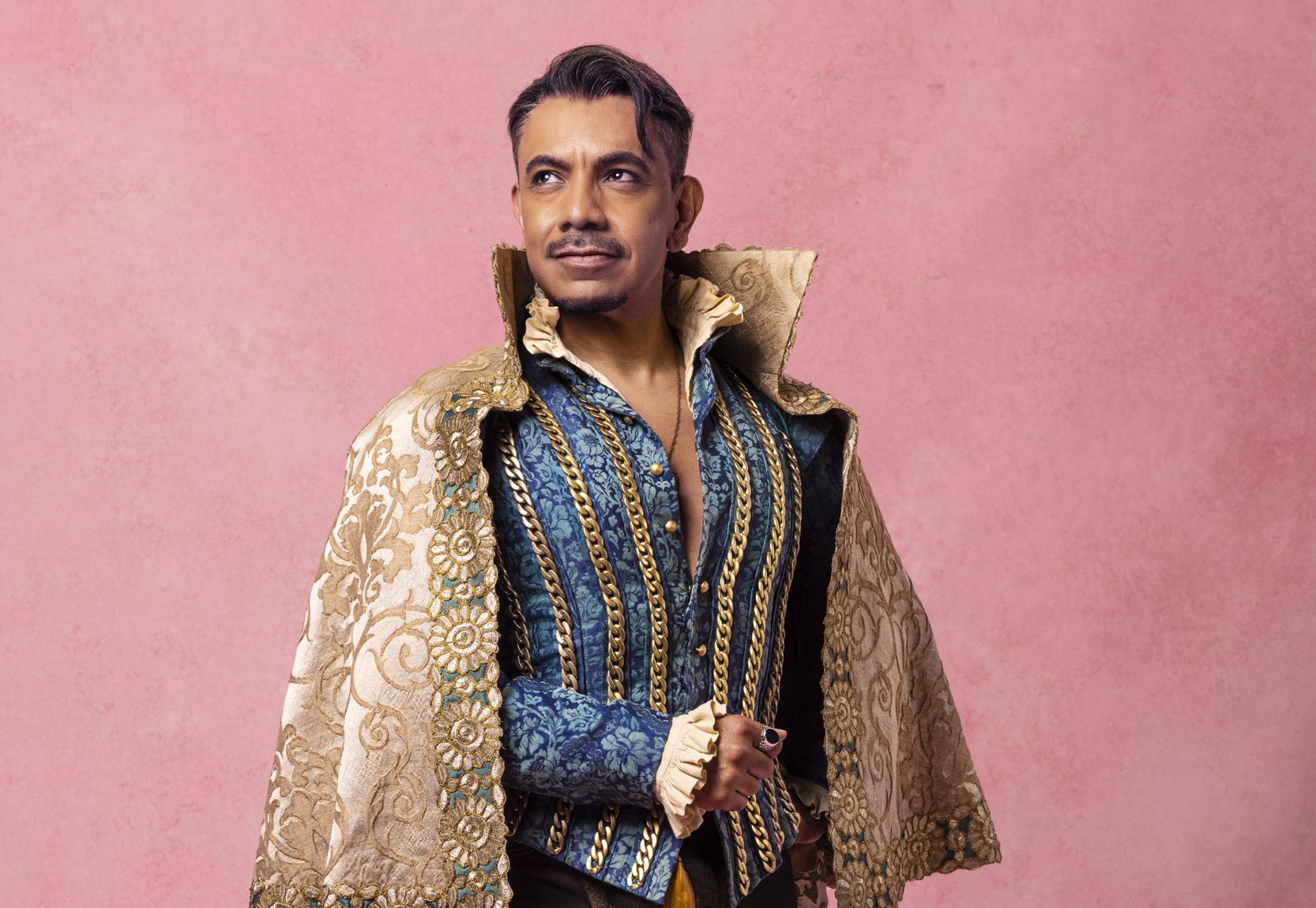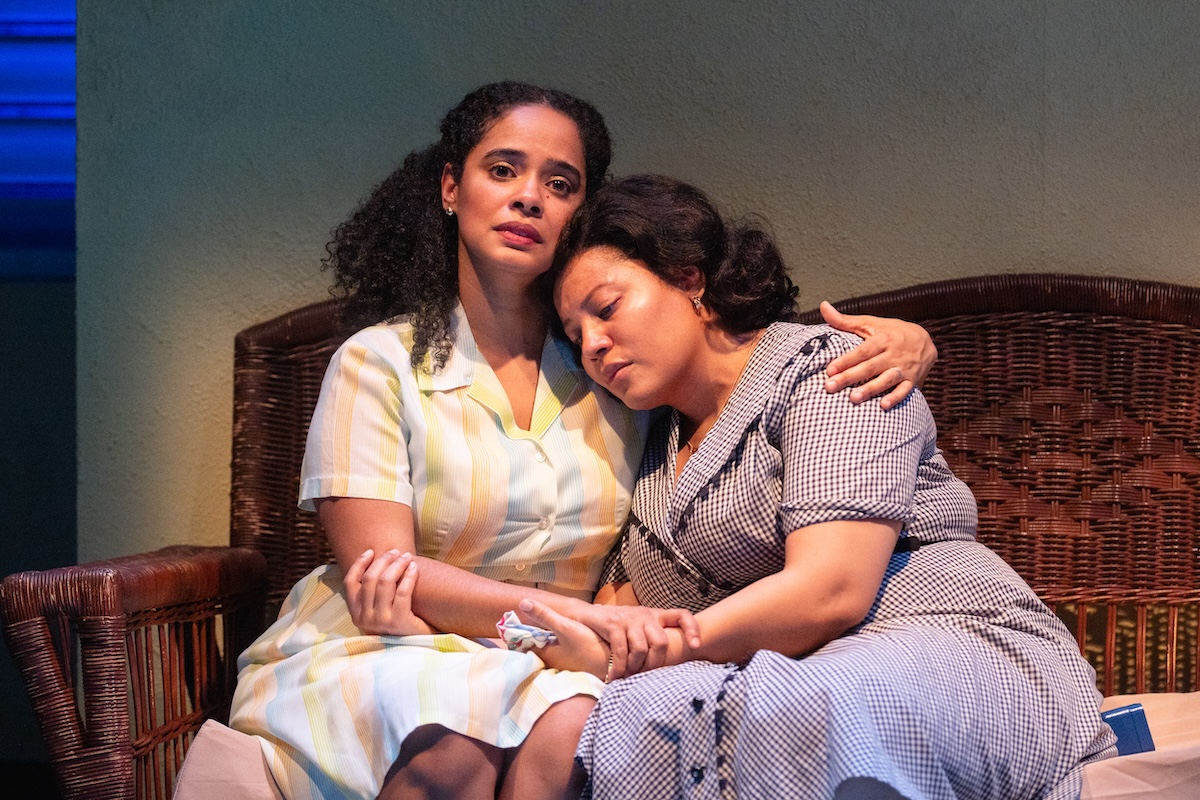Burning Bluebeard

(© Evan Hanover)
When Burning Bluebeard premiered in 2011, the story of the Dec. 30, 1903, fire at Chicago's Iroquois Theatre quickly earned the status of a holiday tradition for those disenchanted with the plethora of nutcrackers, Scrooges, and Santas that glut theaters this time of year. The Ruffian's genre-defying production is at once a comedy and a tragedy, a drama infused with dance, circus stunts, music, and traditional dialogue. And unlike many holiday offerings, it is celebratory without being sentimental.
The story of the fire at the Iroquois (gutted, rebuilt, and renamed the Oriental Theatre in 1926) is well known to many Chicagoans. During a performance of Mr. Bluebeard starring matinee idol Eddie Foy, more than 600 people died after a muslin curtain caught fire. Most of the dead were women and children, packed into the upper balconies where exits were blocked by an overcapacity standing-room-only crowd. Today, ghost hunters often prowl the "alley of death" behind the Oriental, where bodies once stacked up like cordwood as hundreds leaped to their deaths from a malfunctioning fire escape.
Directed by Halena Kays and penned by Jay Torrence, Burning Bluebeard never feels exploitive, despite its gruesome story. A six-person cast of actor-acrobats create an eerie, magnificent memorial to those who died and a homage to the transcendence of art in the face of destruction.
In the meta-theatrical world of Torrence's script, the burnt clowns play the cast and crew of Mr. Bluebeard. They've returned to the ruins of the theater on a quest to make things right – to perform their show without killing almost everyone who saw it. The clowns are rambunctious and disturbed, stricken at the carnage they feel responsible for and overjoyed at the prospect of getting a chance for a do-over. Torrence weaves historical fact with fanciful pantomime, tumbling, and aerial work into a retelling of Mr. Bluebeard and the tragedy it precipitated.
As Foy, Ryan Walters leads the ensemble, playing both the star of Mr. Bluebeard and a spirit guide leading the audience through the fatal fire. His costar is Nelly Reed (Leah Urzendowski), an aerial ballerina who was one of the few Mr. Bluebeard cast members to die in the fire.
Walters brings a playfulness and a heart-wrenching sorrow to Foy. Historians claim Foy never got over the guilt of urging the audience to remain seated and calm after the curtain ignited. Those who obeyed him were incinerated. You can see the guilt in Walter's hollowed-out eyes and a performance that is chilling in its melancholy. As Reed, Urzendowski captures the joyous glee of Nellie's act, which involved swinging above the stage while showering the audience below with crimson flower petals. In Urzendowski's memorable performance, joy turns to terror as Nellie, locked into her flight harness, catches fire and showers the audience with sparks.
The production's surreal commingling of tragedy and exuberance is embodied by the Molly Plunk as the Faerie Queen, a luminous, sylphlike creature who evokes the magic of art, and artists' alchemic ability to find something beautiful and eternal amid a scene of sheer destruction.
Much of the show's mesmerizing appeal comes from Mike Tutaj's exquisite sound design. The piece opens with Nirvana's "Smells Like Teen Spirit" covered by what sounds like a choir of ghost children. It's a number that will make the hair on the back of your neck stand up. As it plays, a handful of singed and blackened clowns slowly emerge from inside body bags strewn about the stage. It's a scene that perfectly captures the tension, beauty, and horror that defines the production.
Maggie Fullilove-Nugent's lighting design is a character in and of itself, bathing the stage in firefly twinkles and immersive flames. In the unforgettable penultimate scene, the actors career through an upstage door, vanishing into a blazing light that seems to swallow them while sound designer Tutaj sends the deafening roar of an inescapable conflagration through the theater. It's a spooky, gorgeous moment.
Burning Bluebeard is one of those shows that follow you out of the theater. You'll feel the production's eerie burn in the depths of winter, long after the holidays are over.











